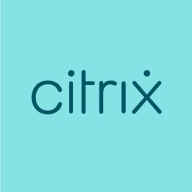

Find out in this report how the two Desktop as a Service (DaaS) solutions compare in terms of features, pricing, service and support, easy of deployment, and ROI.


Enable secure, flexible work with the leader in virtual apps and desktops
Deliver desktop as a service (DaaS) from any cloud or datacenter
Get started with Citrix DaaS (formerly Citrix Virtual Apps and Desktops service) in minutes to provide a familiar, high-performance digital workspace experience to your users. We’ll manage the infrastructure and security. You focus on your business.
Nutanix makes infrastructure invisible, elevating IT to focus on the applications and services that power their business. The Nutanix enterprise cloud platform leverages web-scale engineering and consumer-grade design to natively converge compute, virtualization and storage into a resilient, software-defined solution with rich machine intelligence. The result is predictable performance, cloud-like infrastructure consumption, robust security, and seamless application mobility for a broad range of enterprise applications.
We monitor all Desktop as a Service (DaaS) reviews to prevent fraudulent reviews and keep review quality high. We do not post reviews by company employees or direct competitors. We validate each review for authenticity via cross-reference with LinkedIn, and personal follow-up with the reviewer when necessary.